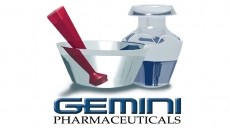ENCAPSULATION TECHNOLOGIES: BEYOND SUPPLEMENTS
Delivery by design: How can companies approach delivery systems more rationally?

“The development of colloidal delivery systems (CDS) to encapsulate, protect, and release bioactive agents has exploded in recent years, as seen by the large increase in papers published in this area,” notes Professor D. Julian McClements, writing in Current Opinion in Food Science.
Examples of such CDS delivery systems include micelles, micro-emulsions, nano-emulsions, emulsions, multiple emulsions, solid lipid nanoparticles, protein nanoparticles, and biopolymer microgels, explains expert in bioactive delivery systems, based at The University of Massachusetts Amherst.
“Despite this fact, it is unclear how many of these delivery systems are actually being adapted by industry, or if they are even suitable for commercial applications,” he warned.
“For instance, they are fabricated from ingredients or processing operations that are too expensive or inappropriate for utilization in foods, or they contain particles that are incompatible with food matrices.
Delivery by design
One of the driving forces for the development of new colloidal delivery systems is the need to encapsulate functional ingredients – like vitamins, minerals, probiotics, bioactive lipids or other nutraceuticals – that are difficult to incorporate into foods in their normal state, says McClements.
“Each of these ingredients may have one or more challenges that limits its direct application in food and beverage products, such as low solubility, crystallinity, chemical degradation, biochemical instability, off-flavours, poor oral bioavailability, or low activity,” he said.
“A carefully designed CDS should overcome these challenges, while also being economically viable and sutable for large-scale production,” he added.
McClements suggests a new way of approaching the issue of colloidal delivery systems could be to apply a newly developed `delivery by design’ concept – which may lead to more efficient production of delivery systems suitable for commercial application in the food industry.
“The delivery by design concept is a systematic approach to designing, fabricating, and testing colloidal delivery systems suitable for specific applications,” noted the expert. “It involves a number of steps that facilitate the creation of CDS suitable for commercial applications.”
According to McClements the delivery by design approach involves a sequence of steps that carefully define the problem and identify solutions.
Key stages
The first stage in involves clearly defining the physical and chemical properties of the active ingredient, including identifying the major challenges that need to be overcome, he explained.
“Different actives have different molecular and physicochemical properties, leading to different challenges to their incorporation into food and beverage products.”
The second stage is to clearly define the desired physicochemical characteristics and functional attributes of the end-product.
“Some of the most important properties include the appearance, texture, stability, mouthfeel, and flavour profile of the product, as well as other attributes that depend on the specific application such as enhanced antimicrobial activity, increased oral bioavailability, or improved chemical stability,” he writes.
“Moreover, it is often important to specify the environmental conditions that the CDS must operate under within the end-product, for example, pH, ionic strength, temperature, mechanical stress, and ingredient interactions,” McClements added – noting that this stage is ‘often ignored’ by researchers developing CDS.
A third stage involves combining the knowledge obtained from the first two stages to specify the attributes of the delivery system required, he said, noting that the properties will be dependent both the nature of the active ingredient and the end-product – and will vary greatly from application-to-application.
According to the researcher, some of the most important parameters of the delivery system to be specified include the physical form (fluid, granules, or powder), optical properties (clear, cloudy, opaque), rheology (low viscosity, viscous, gel-like, soft solid, hard solid), stability, loading capacity, and the retention/release profile.
“As an example, a CDS used to encapsulate omega-3 rich oils into a transparent soft drink should be optically clear, have a low viscosity, have good stability to aggregation and creaming, and protect the lipids from oxidizing,” he noted. “Conversely, a CDS used to encapsulate a vitamin within a yogurt could be optically opaque and have a high viscosity, but it should not adversely affect the mouthfeel and it should give a high oral bioavailability.”
Once the required attributes of the delivery system are established, McClements noted that it is also necessary to specify the properties of the colloidal particles that will provide these attributes, and to select a particular type of delivery system that has these characteristics.
“Once a suitable delivery system has been identified, it is necessary to optimize the manufacturing operation used to manufacture it,” he continued – adding that there is often more than one approach that can be used to produce the same type of CDS.
“For example, high-pressure valve homogenizers, microfluidizers, sonicators, and low-energy methods can all be used to prepare food-grade nano-emulsions,” he said. “A manufacturing operation should be selected that produces the desired particle characteristics, as well as meeting other important criteria, such as availability of equipment, cost, simplicity, reliability, scale up, etc.”
The final important stages in the systematic development of colloidal delivery systems are to then have good analytical testing protocols to ensure that the CDS and end-product have the required structural, physicochemical, and functional attributes, and processes in place to optimise the system.
“As an example, consider the production of a nano-emulsion-based CDS for omega-3 fatty acids,” he writes.
Indeed, McClements says the final stage should be for a manufacture to use a series of sensing devices to monitor processing parameters, as well as to measure particle properties, product properties, and product performance.
“A manufacturer could then use artificial intelligence and machine learning to identify the optimum processing conditions to create the desired functional performance,” he stated.
Source: Current Opinion in Food Science
Volume 23, Pages 80-84, doi: 10.1016/j.cofs.2018.06.008
“Recent developments in encapsulation and release of functional food ingredients: delivery by design”
Author: David Julian McClements















